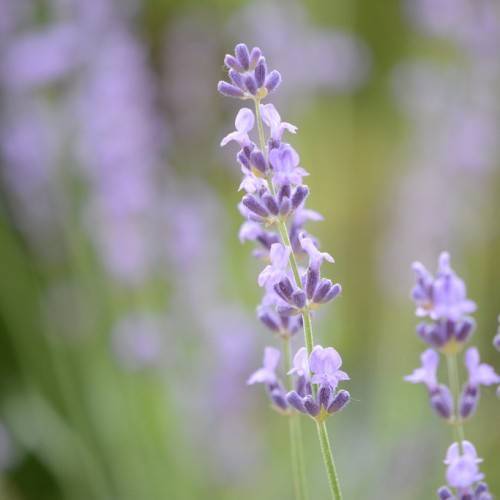
English lavender
Lavandula angustifolia 'Sharon Roberts'
Cycle:
Herbaceous Perennial
Watering:
Minimum
Hardiness Zone:
5 - 8
Flowers:
Flowers In Summer
Sun:
Full sun
Soil:
Rocky , gravelly , dry, Well-drained
Fruits:
Fruits In Autumn Ready In Summer
Leaf:
Yes
Growth Rate:
Moderate
Maintenance:
Moderate
Salt Tolerant:
Yes
Care Level:
Medium
watering
English lavender requires moderate watering, and should be watered deeply but infrequently. About once a week should be sufficient. To ensure that the soil has an adequate moisture level, water until it begins to drip out of the drainage holes in the bottom of the pot. Allow the pot to drain thoroughly before moving it back indoors. It will help to water your lavender in the morning so that the water has time to evaporate during the day, reducing the chance of fungal diseases.
sunlight
English lavender (Lavandula angustifolia 'Sharon Roberts') needs full sun, which means at least 8 hours of direct sunlight per day. This particular variety of lavender is best planted and grown in well-drained soil in a part of your garden that receives full sun all day, or at least most of the day. Aim for at least 70% full sun for English lavender, but even 50% full sun can be beneficial.
pruning
English lavender should be pruned during the late winter/early spring season. This will ensure that you have blooms and foliage growth during the summer season. Pruning should be done after the flowers have been removed in order to prevent the plant from using energy to produce seed. When pruning, the plant should be cut back approximately 1/3 of its original height. Because this particular variety of lavender can become woody with age, it may require more aggressive pruning. If so, cut the entire plant back to within 6 to 8 inches from the ground. This will encourage new, lush foliage growth. Be sure to remove any dead, weak or damaged stems. Additionally, it is important to remove all seed heads and dead flower heads.
